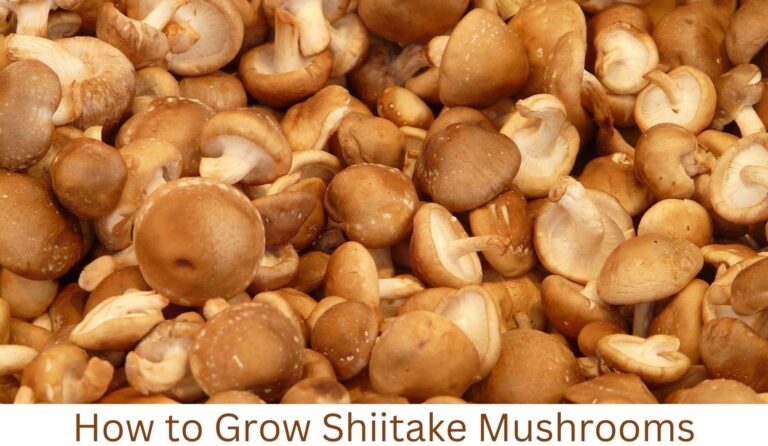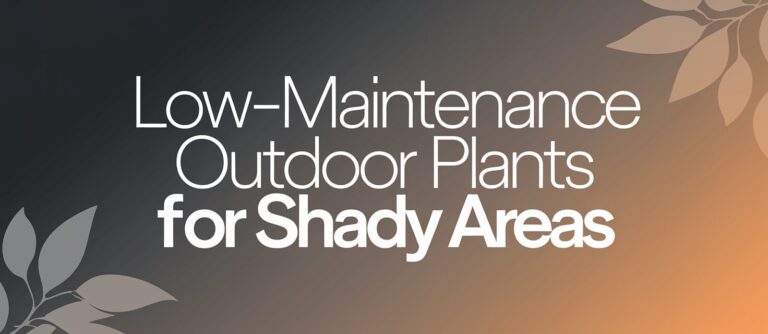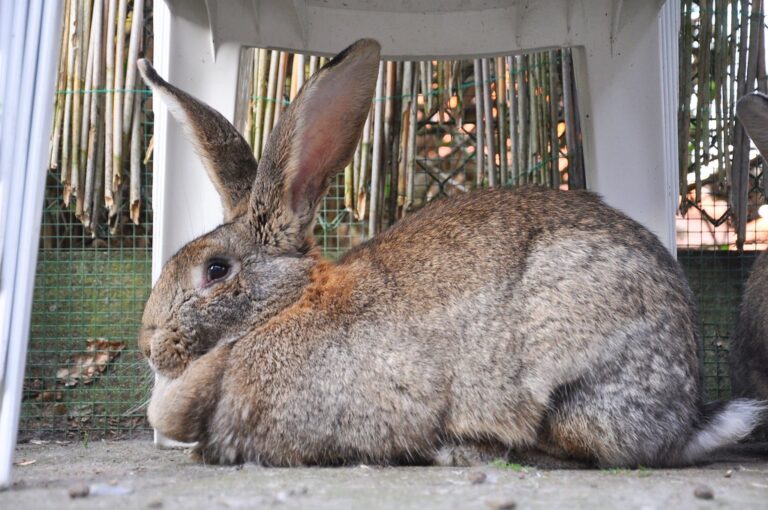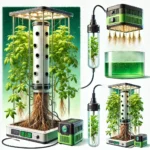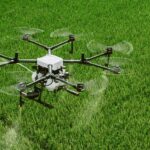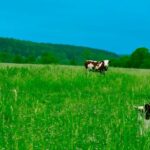Email: blogagri2@gmail.com
Miniature Cow Breeds: Types, Traits, and Care Tips
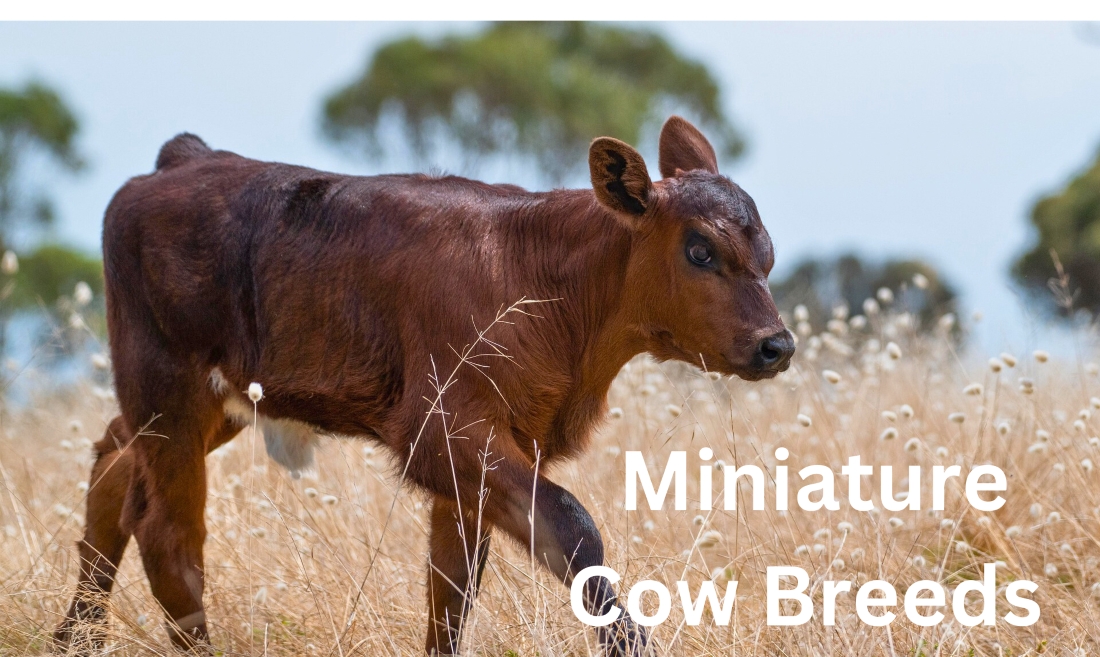
Have you ever thought about what it would be like to own a cow as big as a large dog? Miniature cows are for you! They are small-sized breeds of cattle that have a height of approximately one-third of the height of typical cows. This makes them perfect companions for small homesteads or hobby farms. These pint-sized bovines combine all the lovable traits of full-sized cattle in a more compact physique. Whether you are a homesteader looking to start a small-scale farm or an animal lover who wants a pet, mini cows are incredibly beneficial: • Limited space is needed as well as feed compared to standard cattle • Gentle temperament makes them the perfect family pet • They perfect for sustainable farming practices • Can be used as therapy animals This guide has been formulated for anyone looking to understand these animals better, their popular breeds, distinguishing traits, and best care practices.
What Makes Miniature Cows Special
Miniature cows which are not more than 35 inches in general are actually very fascinating creatures which are widely admired by farmers, breeders, and common people. Some of their traits are very uncommon and this makes them noticeable next to other usual cows in several different interesting ways.
Compact Size, Big Personality
These small cows are usually born at one-third the size of regular cattle which make them the most appropriate for the smaller properties. As small as they are, they have the same lovable traits as well as the smartness of full-sized cows, often revealing themselves in the playful and affectionate characters.
Environmental Champions
Moreover, a mini cow leaves a much smaller environmental impact when compared to the typical cow. Their small size translates into less biomass but still produces more cows’ weight-to-feed ratios. Their reduced weight also prevents soil compaction, thus, causing less damage to grasslands and pastures.
Perfect Family Companions
What truly makes miniature cows special is their adaptability as family pets. Their docile nature and manageable size make them excellent companions for both children and adults. They’re known for forming strong bonds with their caretakers and can even be trained to respond to basic commands.
Resource-Efficient Farming
These compact cattle are incredibly efficient when it comes to resource utilization. They require only about one-third of the feed that standard cattle need, making them more economical to maintain. Their smaller size also means they need less space – typically 1-2 acres per cow compared to 5-10 acres for regular cattle.
Versatile Purpose
Beyond their charm as pets, miniature cows serve multiple purposes. They can be raised for milk production, offering a more manageable dairy source for small homesteads. Some breeds are also suitable for meat production, providing a sustainable option for small-scale farming operations.
💡 Key Takeaway: Miniature cows combine the best of both worlds – the traditional benefits of cattle raising with modern practicality, making them ideal for small-scale farming, family pets, and sustainable agriculture.
Popular Miniature Cow Breeds
Miniature cows come in various breeds, each with unique characteristics and traits that make them special. Let’s explore some of the most popular miniature cattle breeds that have captured the hearts of farmers and enthusiasts worldwide.
Heritage Breeds
The Dexter breed stands out as one of the oldest and most well-established miniature cattle breeds. Originally from Ireland, these compact bovines typically stand 36-44 inches tall at the shoulder. They’re known for their hardy nature and excellent milk production capabilities.
Another notable heritage breed is the Lowline Angus, developed in Australia. These cattle are about 30-40% smaller than standard Angus cattle but retain the same high-quality beef characteristics. They’re particularly praised for their docile temperament and efficient feed conversion.
The Miniature Zebu, originating from South Asia, is one of the smallest cattle breeds. These distinctive animals feature a prominent shoulder hump and typically reach heights of just 36-42 inches. They’re well-adapted to hot climates and are often kept as pets due to their gentle nature.
Modern Miniature Varieties
The Miniature Hereford has gained significant popularity in recent years. These cattle maintain the classic red and white coloring of standard Herefords but in a more compact package, standing 42-48 inches tall. They’re excellent choices for small-scale beef production.
Miniature Jerseys have become favorites among homesteaders seeking dairy options. These diminutive dairy cows produce rich milk with high butterfat content, making them perfect for families wanting fresh dairy products. They typically stand 38-42 inches at the shoulder.
The Panda Miniature cow, a more recent development, has captured attention with its unique black and white spotted pattern. These cattle are bred specifically for their striking appearance and friendly disposition, making them popular as pet cows.
💡 Key Takeaway: Popular miniature cow breeds include heritage varieties like Dexters and modern breeds like Mini Herefords, each offering unique benefits from milk production to companionship while maintaining manageable sizes for small properties.
Physical Characteristics and Traits
Size and Stature
Miniature cows are remarkable for their compact size, typically standing between 36 to 42 inches tall at the shoulder. This is significantly smaller than standard cattle breeds, which can reach heights of 60 inches or more. Despite their diminutive stature, these small-scale bovines maintain proportionate body structures that mirror their larger counterparts.
Adult miniature cows generally weigh between 500 to 800 pounds, making them much more manageable than traditional cattle that can weigh up to 2,000 pounds. Their reduced size doesn’t compromise their functionality – they still possess the sturdy build and muscular frame characteristic of cattle, just in a more compact package.
Temperament and Behavior
One of the most endearing aspects of miniature cows is their gentle and docile nature. These animals typically display a calm demeanor and are known for being less intimidating than their full-sized relatives. Their friendly disposition makes them excellent companions for families and small-scale farmers alike.
Miniature cows are highly social animals that form strong bonds with their herd mates and human caretakers. They demonstrate remarkable intelligence and can learn basic commands with proper training. Their curious nature and eagerness to interact make them ideal for those seeking a more personal connection with their livestock.
These diminutive bovines also show excellent maternal instincts, with mothers being particularly attentive to their calves. They adapt well to different environments and can thrive in various settings, from small homesteads to larger farming operations.
💡 Key Takeaway: Miniature cows combine the best attributes of standard cattle in a compact package, featuring heights of 36-42 inches, weights of 500-800 pounds, and gentle temperaments that make them ideal for small-scale farming.
Essential Care Requirements
Housing and Shelter Requirements
Miniature cows need proper shelter to protect them from harsh weather conditions and predators. A well-ventilated barn or stable with adequate space is essential. Each mini cow requires about 50-75 square feet of indoor space, allowing them to move comfortably and rest.
The shelter should have good drainage to prevent wet, muddy conditions that can lead to hoof problems. Install proper lighting and ensure the roof is leak-proof. During winter months, provide extra bedding materials like straw or wood shavings to keep them warm and cozy.
Consider installing rubber mats on concrete floors to prevent slipping and joint stress. The shelter should also have designated feeding and watering areas that are easily accessible and clean.
Nutrition and Feeding Guidelines
Proper nutrition is crucial for maintaining healthy miniature cows. Their diet primarily consists of grass, hay, and grain supplements. On average, a mini cow consumes about 2-4% of their body weight in feed daily.
Fresh, clean water should be available at all times. An adult miniature cow drinks approximately 5-10 gallons of water per day, depending on the weather and activity level.
Here’s a basic feeding guide:
– High-quality grass hay as the main dietary component
– Access to pasture grass during growing seasons
– Grain supplements (if needed) based on age and condition
– Mineral blocks or loose minerals for essential nutrients
– Fresh vegetables as occasional treats
Monitor their body condition regularly and adjust feed portions accordingly. Overfeeding can lead to obesity, while underfeeding affects their health and productivity. During pregnancy or lactation, females require additional nutritional support.
Remember to introduce any dietary changes gradually to prevent digestive issues. Store feed in dry, rodent-proof containers and regularly clean feeding equipment to maintain hygiene.
💡 Key Takeaway: Miniature cows require proper shelter with adequate space and ventilation, along with a balanced diet of grass, hay, and supplements, supported by constant access to fresh water for optimal health and well-being.
Space and Housing Needs
Miniature cows may be small, but they still need proper space and housing to thrive. While they require less room than standard cattle, providing adequate shelter and living areas is crucial for their well-being.
Space Requirements
A miniature cow typically needs about 1/3 to 1/2 acre of pasture per animal. This is significantly less than the 1-2 acres required for standard-sized cattle. For a small herd of 2-3 mini cows, a one-acre pasture usually suffices, making them perfect for hobby farms and smaller properties.
Shelter Specifications
Your mini cows need a three-sided shelter that’s at least 8×8 feet per animal. This provides protection from harsh weather while allowing proper ventilation. The shelter should face away from prevailing winds and have good drainage to keep the floor dry.
Fencing Considerations
Standard cattle fencing works well for miniature breeds. A 4-5 foot high fence is usually adequate. You can use:
– Woven wire fencing
– Electric fencing
– Wooden post and rail fencing
– High-tensile smooth wire
Additional Housing Features
Include these essential elements in your mini cow housing setup:
– A covered feeding area to protect hay from weather
– Access to fresh, clean water
– A mineral block station
– A designated area for grooming and health checks
– Proper lighting for monitoring during darker hours
💡 Key Takeaway: Miniature cows need about 1/2 acre per animal and an 8×8 feet shelter space, making them manageable for small properties while requiring proper fencing and essential housing features for optimal care.
Read Also if You missed: Top 10 large rabbit breeds in the world
Breeding and Reproduction
Understanding the breeding and reproduction process of miniature cows is crucial for maintaining healthy herds and ensuring successful offspring. These compact bovines follow similar reproductive patterns to their larger counterparts, but with some unique considerations.
Sexual Maturity
Miniature cows typically reach sexual maturity earlier than standard cattle breeds. Females (heifers) usually become fertile between 10-12 months of age, while males (bulls) reach breeding capability around 12-15 months. However, it’s recommended to wait until heifers reach at least 15-18 months before breeding to ensure proper physical development.
Breeding Season
While miniature cows can breed year-round, many breeders prefer seasonal breeding during spring or fall. This strategic timing helps align calving with favorable weather conditions and ensures optimal care for both mother and calf.
Gestation Period
The pregnancy duration for miniature cows remains consistent with standard cattle at approximately 283-290 days. During this time, proper nutrition and veterinary care are essential for the health of the mother and developing calf.
Calving Process
Miniature cows generally experience fewer complications during calving compared to larger breeds due to their smaller size. However, first-time mothers should be closely monitored. The calving process typically takes 2-4 hours, and most mini cows can deliver without assistance.
Post-Birth Care
Newborn calves usually weigh between 20-40 pounds, depending on the breed. It’s vital to ensure the calf receives colostrum within the first few hours after birth. The mother and calf should be kept in a clean, dry environment and monitored for any health issues during the first few weeks.
💡 Key Takeaway: Miniature cow breeding requires careful timing and monitoring, with sexual maturity occurring earlier than standard breeds and a gestation period of 283-290 days, resulting in smaller, manageable calves.
Cost and Investment Considerations
Investing in miniature cows requires careful financial planning. Let’s break down the essential costs you need to consider before bringing these adorable creatures home.
Initial Purchase Price
The cost of miniature cows varies significantly based on breed, age, and pedigree. You can expect to pay anywhere from $1,800 to $3,500 for a single miniature cow. Show-quality or rare breeds might command higher prices, sometimes reaching up to $10,000.
Feed and Nutrition Expenses
While miniature cows consume less than their full-sized counterparts, feed costs remain a significant ongoing expense. Monthly feed expenses typically range from $50 to $100 per cow, including hay, grain, and supplements. This cost can fluctuate based on your location and seasonal availability.
Healthcare and Veterinary Services
Regular veterinary care is crucial for maintaining healthy mini cows. Annual checkups, vaccinations, and routine deworming can cost between $200 to $500 per year. Emergency veterinary services might incur additional expenses, so it’s wise to maintain an emergency fund.
Infrastructure and Equipment
Setting up proper housing and fencing is a one-time investment that shouldn’t be overlooked. Basic shelter construction might cost $500 to $1,500, while appropriate fencing for a small pasture typically ranges from $1,000 to $3,000. You’ll also need basic equipment like feeding troughs, water systems, and handling facilities.
Insurance and Registration
Consider insurance coverage for your miniature cows, which can cost $150 to $300 annually. Registration fees with breed associations vary but usually range from $25 to $100 per animal. These registrations can add value to your investment, especially if you plan to breed or show your mini cows.
💡 Key Takeaway: While miniature cows require a significant initial investment of $3,000-$5,000, their lower maintenance costs and multiple benefits make them a cost-effective alternative to standard cattle for small-scale farming.
Legal and Registration Requirements
Documentation Requirements
Owning miniature cattle involves specific legal paperwork and documentation. You’ll need to maintain accurate records of ownership, health certificates, and breeding history. These documents are essential for both personal records and potential sales transactions.
Registration Process
Most miniature cattle breeds can be registered through organizations like the International Miniature Cattle Breeds Registry (IMCBR) or breed-specific associations. The registration process typically requires detailed information about the animal’s lineage, physical measurements, and photographs for verification.
Health Regulations
Local and state regulations often mandate regular health inspections and vaccinations for livestock, including miniature cows. You’ll need to work with a licensed veterinarian to ensure compliance with these requirements and maintain proper health records.
Zoning Considerations
Before acquiring miniature cattle, check your local zoning laws. Many areas have specific regulations about keeping livestock, even on residential properties. Some regions may require minimum acreage or special permits for keeping miniature cows.
💡 Key Takeaway: Proper documentation, registration with recognized organizations, health compliance, and adherence to local zoning laws are essential legal requirements for owning miniature cattle.
Conclusion
As we wrap up our journey through the world of miniature cows, it’s clear these charming creatures offer a unique blend of practicality and companionship. From the gentle Dexter to the fluffy Highland minis, each breed brings its own special traits to your homestead. Whether you’re drawn to their manageable size, sustainable farming benefits, or their potential as therapy animals, miniature cows can truly enrich your life. Remember, successful miniature cow ownership requires dedication to proper care, including regular health checks, quality feed, fresh water, and adequate shelter. By following the guidelines we’ve discussed and working closely with experienced veterinarians, you’ll be well-equipped to provide your mini cow with the best life possible. Ready to start your miniature cow journey? Begin by researching local breeders, preparing your space, and connecting with current cow owners in your area. These little creatures aren’t just livestock – they’re legacy animals that can bring joy, purpose, and sustainable living to your homestead for years to come.
FAQs
Miniature cows typically live between 15-20 years when properly cared for. This is similar to standard cattle breeds, but with good healthcare and proper nutrition, some mini cows have been known to live even longer. Their smaller size doesn’t significantly impact their longevity.
Miniature cows require approximately 1/2 to 1 acre of land per animal for grazing. Despite their small size, they still need adequate space to roam, exercise, and maintain their best life. Proper fencing and a shelter area are essential components of their living space.
Yes, miniature cows are generally excellent with children. Their smaller size, gentle nature, and typically calm temperament make them ideal family pets. However, like any animal, they need proper training and supervision, especially when interacting with young children.
Initial purchase prices for miniature cows range from $1,500 to $8,000, depending on the breed and pedigree. Monthly maintenance costs include feed ($50-100), veterinary care, and basic supplies. As a rare type of cattle, they can be a significant investment.
A miniature dairy cow typically produces 1-2 gallons of milk per day, which is about 1/3 of what a standard dairy cow produces. The jersey cattle of the original island type and other mini dairy breeds are known for producing rich, high-butterfat milk.
While miniature cows are small compared to traditional breeds, they are not suitable as indoor pets. They require lots of fresh air, pasture for grazing, and outdoor space to maintain their physical and mental well-being. They’re best suited for outdoor farm environments.

